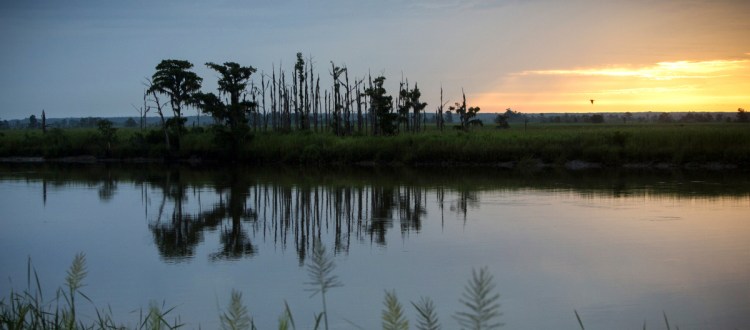The most-quoted analysis of the 2016 election came from The Atlantic’s Salena Zito, who observed that “the press takes (Trump) literally, but not seriously; his supporters take him seriously, but not literally.”
Two years later, it’s still hard to know how we are supposed to take some of President Trump’s ideas, like his proposed dismantling of the Clean Power Plan regulation on carbon emissions, which would let states decide how much they would like to pollute, regardless of the costs elsewhere to the environment and public health.
If we take Trump literally, this summary from Maine Sen. Angus King does the job: “What this plan is doing essentially is extending the life of dirty, polluting plants and shortening the life of real people.”
But how could you take a proposal like this seriously? It’s supposed to create jobs, but the biggest energy-related job generators in the country these days are in solar and wind. According to the Department of Energy’s annual employment report for 2017, those industries combined to make up nearly three times as many jobs as the coal industry.
This is an idea that can’t be taken seriously, or literally. The only way it makes any sense is politically.
DRIVEN TO DISTRACTION
The announcement last week gave a crowd at a Trump rally in West Virginia something to cheer about when the news channels were choked with the nearly simultaneous reports that a jury in Virginia had convicted former Trump campaign chairman Paul Manafort of eight felonies, including bank fraud and tax evasion, while in New York, Trump’s former personal attorney Michael Cohen was pleading guilty to another eight felonies, including two campaign finance violations that he said he committed at the direction of the president.
It’s easy to see why Trump would want to change the subject, but it shouldn’t make his pro-coal Affordable Clean Energy Rule any more attractive to anyone, except maybe some coal miners.
We are in the midst of a global environmental crisis. Gas released by burning fossil fuels is causing the Earth’s air and water to warm. Rising sea levels, drought, intense storms and the spread of disease are just some of the ways we’ve already been affected.
Unchecked, climate change will create incalculable damage to places where people live, destroying lives and escalating a gigantic refugee crisis.
According to the EPA, power generation accounts for 28 percent of the CO2 released into the atmosphere, which makes it a good target for reduction. The Clean Power Plan was not sufficient, but it represented a good first step, one that the current administration should be building on.
THREAT TO CLEAN AIR
If the plan’s impact on climate change sounds risky, the idea that you can control air pollution on a state-by-state basis is absurd.
The air we breathe in Maine passes through states to our west and south. Reviving coal plants in the Great Lakes region would send dirty air our way, increasing instances of diseases like asthma. We don’t have any coal plants in Maine, but we do have higher-than-average rates of asthma, in part because of the prevailing winds and our location at the end of the nation’s tailpipe. As King points out, the Trump Environmental Protection Agency’s own analysis determines that some people would get sick as a result of the rule, and some of them will die.
And to add to the insult, the president’s approach could further reduce energy prices in the coal-burning states, putting Maine manufacturers at a disadvantage.
We don’t need policies that increase pollution and accelerate climate change. We need government action that protects the people of Maine and beyond from the harmful effects of air pollution.
The message to Maine’s representatives in Washington should be: Don’t take this idea literally and don’t take it seriously – don’t take it at all. Fight for sensible environmental regulation before it’s too late.
Send questions/comments to the editors.



Success. Please wait for the page to reload. If the page does not reload within 5 seconds, please refresh the page.
Enter your email and password to access comments.
Hi, to comment on stories you must . This profile is in addition to your subscription and website login.
Already have a commenting profile? .
Invalid username/password.
Please check your email to confirm and complete your registration.
Only subscribers are eligible to post comments. Please subscribe or login first for digital access. Here’s why.
Use the form below to reset your password. When you've submitted your account email, we will send an email with a reset code.